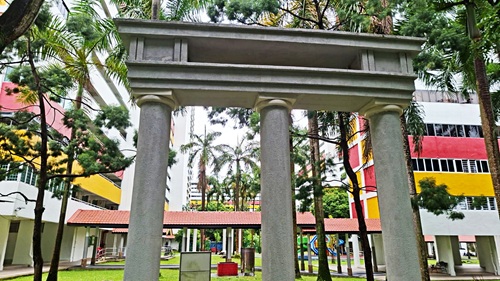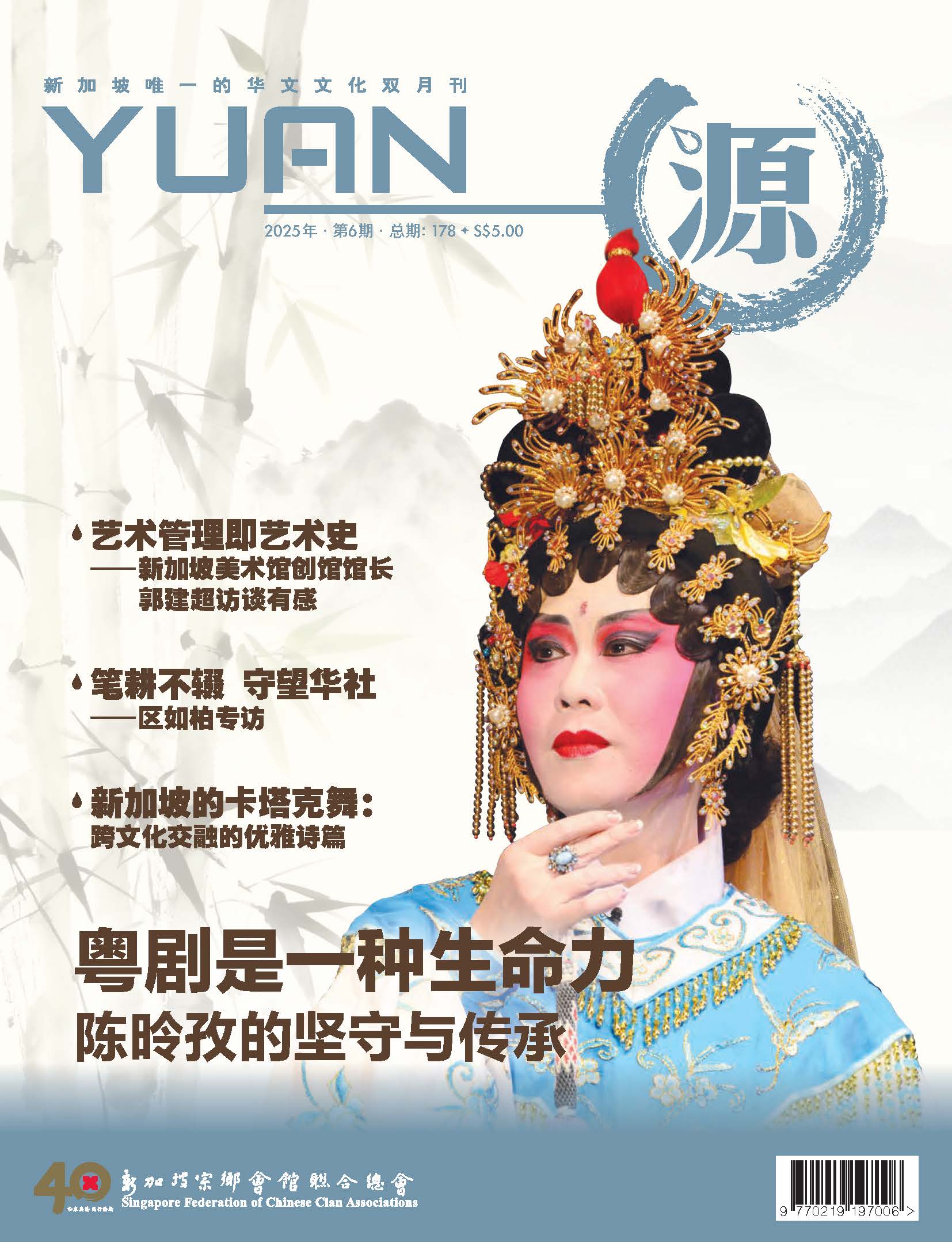比达达利:从昔日宗教墓地绽放异彩的“仙女”
文图 · 李国樑
位于实龙岗路上段的比达达利(Bidadari),占地约相当于大巴窑的五分之一,兴建超过一万个组屋单位与私人住宅。它是新加坡首个以“花园里的社区”理念打造的新镇,自然少不了连绵起伏、绿意盎然的景观。
-1200x742.jpg)
20世纪初的比达达利坟场(图源:明信片)
不久前的比达达利仍是宗教墓园的代名词,自上世纪70年代停止下葬后,大自然“接管”这片土地。草木蔓生间,这里成为附近居民晨运的好去处,也吸引不少观鸟爱好者踏足其间。
本世纪初,政府将建在坟场上的新镇规划为四大区域:阿卡夫(Alkaff,昔日基督教坟场)、兀里(Woodleigh,昔日回教坟场)、巴特礼(Bartley Heights,昔日兴都教坟场)与碧黛丽园(Park Edge,昔日锡克教坟场),整个新镇预计将在2025年底全面竣工。
比达达利地底隐藏着新加坡首个地下蓄水池,容量相当于三个奥林匹克标准泳池,可为约八成住户提供洁净水,体现出城市发展与基础设施的理想结合。
阿卡夫湖排水观景两相宜

比达达利公园内的阿卡夫湖,背景为比达达利阿卡夫区的政府组屋
比达达利公园是新镇的核心,坐落于昔日的锡克与兴都教坟场上,设计灵感源自英国作家米恩(A. A. Milne)笔下的经典童话《小熊维尼》。维尼与伙伴们在“百亩森林”中探险、游戏,传递友谊、乐观与团结的精神。这种童趣与温暖的氛围,巧妙地融入公园的构想中。
荒废的比达达利曾经是候鸟的重要中转站。如今,公园内的“猛禽窝”(Raptor Nest Platform),成为许多鸟类(包括候鸟)过境栖息、筑巢之地,延续自然与城市的共生关系。
园内的“现代”阿卡夫湖(Alkaff Lake),名字源自消失已久的同名湖泊。近年来暴雨频繁,低洼地区重现消失多年的淹水现象。新的阿卡夫湖不仅供公众漫步赏景,亦具备调节排水功能。暴雨时附近半个组屋区的地面水汇入湖中,再排入加冷河,最终流向滨海蓄水池。
原阿卡夫湖位于现址以外约半公里处,曾是新加坡首座“日本花园”,园中设有日式桥梁、茶室与船屋。新马合并期间,此地段被改建为信立(Sennett)住宅区与学校用地,四德女中和已走入历史的实惠中学皆坐落于此,承载着几代人的求学记忆。
比达达利皇宫
19世纪中叶的地图记载,比达达利一带称为“老虎山”(Tiger Hill),形容山林中有虎踪出没。至于“Bidadari”一词,马来语意指“仙女”,据说是一位英国商人以此为他的府邸命名。
1860年代,天猛公阿布巴卡(Temenggong Abu Bakar)从英国商人手中购得此地,并为其第二任妻子朱白妲(Zubaidah binti Abdullah,原名Cecilia Catharina Lange)兴建比达达利皇宫(Istana Bidadari)作为住所。“比达达利”后来也成为王妃的昵称,用以形容她温婉优雅、知书达理的气质。
朱白妲拥有丹麦父亲与华人母亲的血统,自幼在峇厘岛、新加坡、印度、英国、法国等地生活,回到新加坡后就读于教会学校。20岁那年,她皈依伊斯兰教,随即与天猛公成婚。
朱白妲在比达达利育有一对子女:女儿马莉安(Mariam)日后成为彭亨苏丹后,儿子易布拉欣(Ibrahim)则继承父位,登基为柔佛苏丹。
1885年,阿布巴卡受封为柔佛苏丹后,举家迁入柔佛新建的苏丹皇宫居住。比达达利皇宫从此荒废。
比达达利纪念园
进入上个世纪初,殖民地政府将比达达利改建为基督教坟场,日后陆续增设其他宗教的墓葬区。
本世纪初,随着迁坟工程展开,原比达达利坟场的大门及20座具有历史意义的墓碑被迁移至翡珑山的比达达利纪念园。这些墓碑的主人包括新加坡自治年间逝世的劳工部长易卜拉欣(Ahmad bin Ibrahim)、设计莱佛士酒店的英国建筑师Regent Alfred John Bidwell、本地华人西医林文庆与夫人殷碧霞、第一位获得英女皇奖学金的宋旺相,以及李光耀从剑桥回国后所加入律师事务所的创办人John Laycock等人。
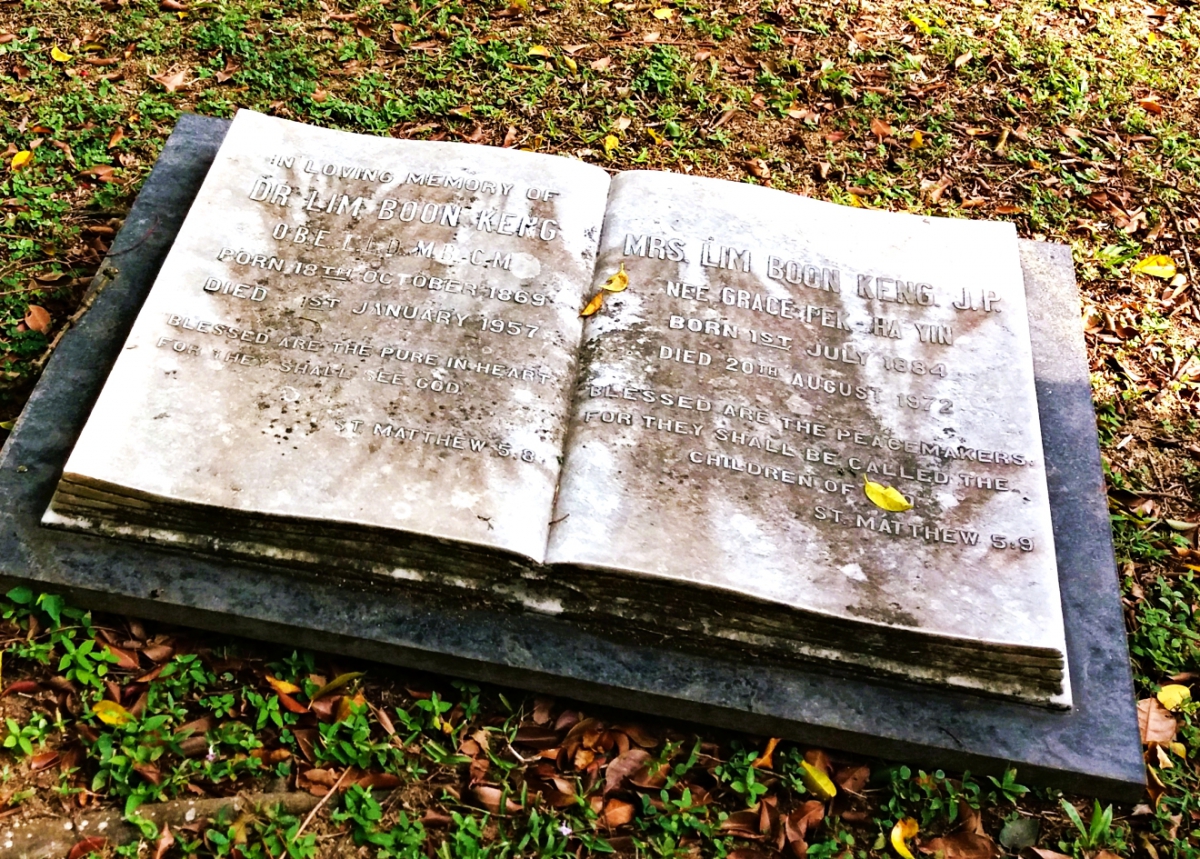
林文庆医生与夫人的墓碑
翡珑山火化场与骨灰安置所

翡珑山骨灰安置所拆除前,一群文史爱好者前往参观留影
翡珑山位于比达达利坟场的东侧,曾是翡珑山火化场与骨灰安置所,绿瓦顶的灵塔一度成为这里的地标。翡珑山火化场自新加坡自治邦年代便开始运作,是本地首个公共火化设施。
当时土葬仍为主流,然而随着人口增长,生与死的空间必须重新规划。1970年代,政府立法禁止土葬,翡珑山火化场以煤气取代木柴进行火化,并扩建骨灰安置所,设立殡仪馆,进一步改进丧葬服务。
火化场于2004年关闭,骨灰安置所也于2018年停止运作,为新镇的发展腾出空间。部分原址正在兴建多层综合殡仪馆大楼,取代昔日的翡珑山殡仪设施。
尽管殡仪馆邻近住宅区,但由于屋主在购买房子前已了解整体规划,因此并未感到不安或提出异议,可见有效的沟通可以为现代都市生死空间的使用带来新的诠释。
与昔日坟场为邻的学校
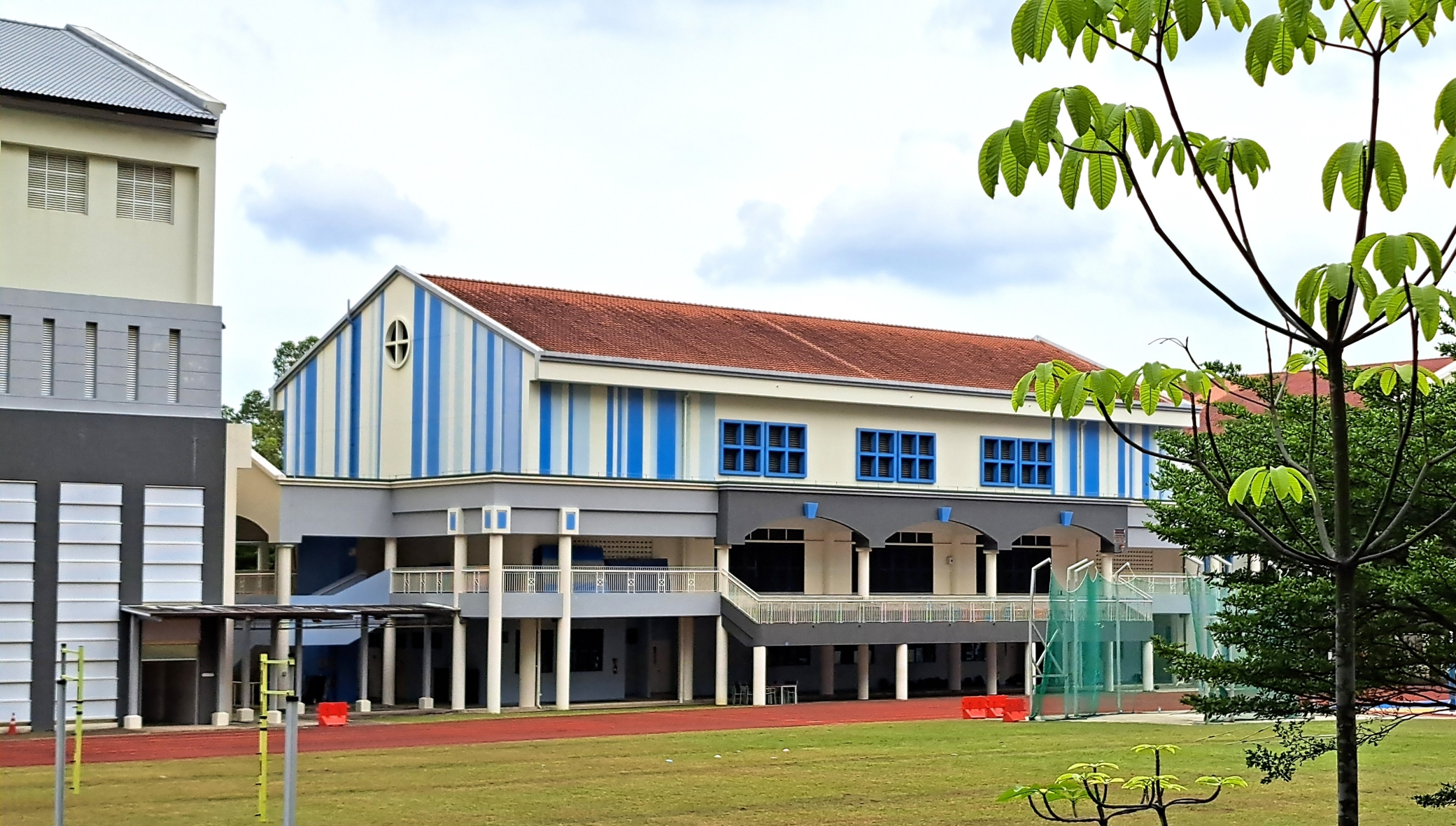
四德女中的校址坐落在消失的阿卡夫湖一带
比达达利新镇一带曾是教育资源的汇聚地,现今仍有六所学校分布其中,包括政府创办的四德女子中学(Cedar Girls Secondary School)、四德小学(Cedar Primary School)、巴特礼中学(Bartley Secondary School)、天主教会设立的海星中学(Maris Stella High School)及其附小,以及由私人机构营运的斯坦福美国国际学校(Stamford American International School)。
至于走入历史的校园,包括实廉工艺中学(Upper Serangoon Secondary School)、实理中学(Mount Vernon Secondary School)、实明工艺中学(Upper Aljunied Technical School)、实惠中学(Willow Avenue Secondary School)、义林北小学(Elling North School)、义林南小学(Elling South School),以及桑尼拉乌他玛中学(Sang Nila Utama Secondary School)。桑尼拉乌他玛中学是这里唯一的马来与英文混合学校,如今新镇内的桑尼拉乌他玛路就在学校原址一带。

1960年代的山尼拉乌他马中学是比达达利唯一的英文与马来文混合学校
这些与坟场为邻的学校大多设立于1950年代,其中1952年成立的巴特礼中学可说是“老大哥”。四德女中开课后,原巴特礼中学的女生转入四德就读。随着教育政策的调整,巴特礼中学回归男女同校体制,四德女中转型为自主中学,与维多利亚中学及维多利亚初级学院联合开办直通车课程;海星中学则于1970年代末成为首批特选中学之一。
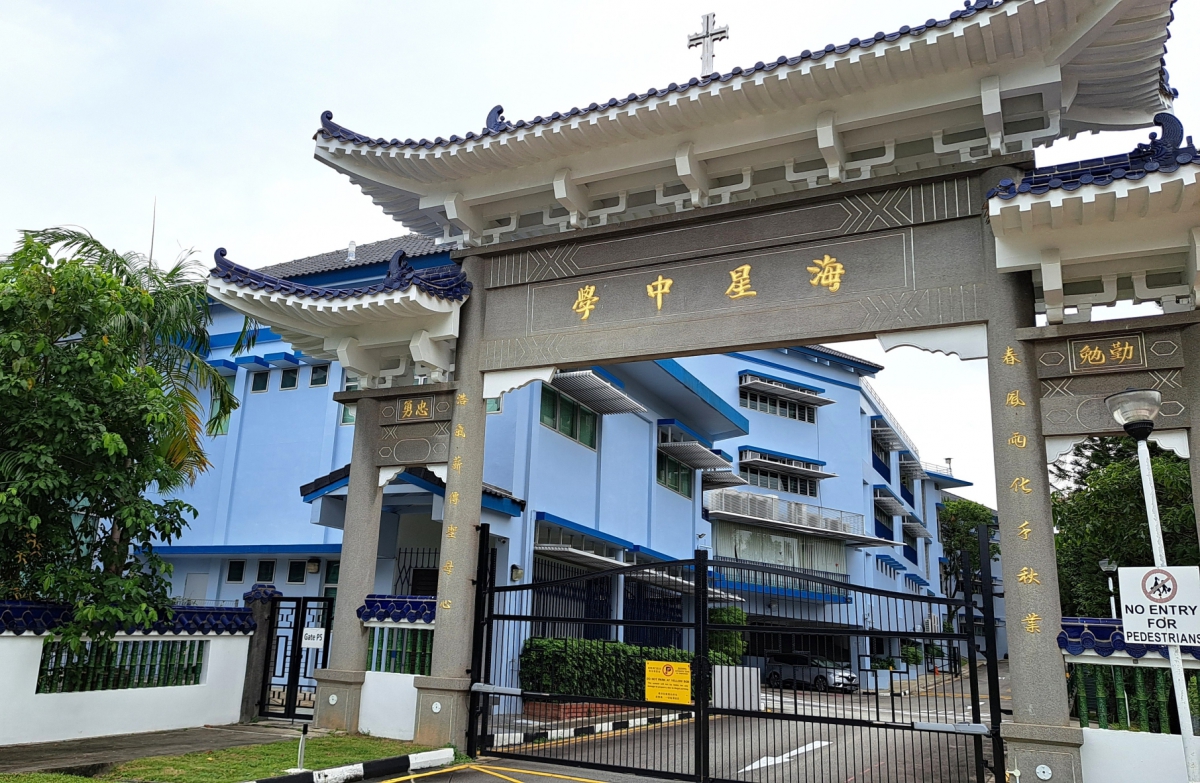
海星中学的成立与公教中学有一段渊源
海星中学的创校背景与公教中学息息相关。1950年代末,报读公教中学的人数远超负荷,天主教会决定成立海星中学来满足需求。初期,海星中学没有固定校舍,只能借用其他学校上课。师生们在“流浪”中坚持十年,直到迁入翡珑山的新校舍,终于拥有属于自己的学习环境。
年轻校友李嘉庆医生回忆那段青涩岁月:“最难忘的是每天早晨站在教室外,面向中央庭院,高唱国歌与校歌和聆听广播。中四的最后一天,我们依照传统,把长裤换回中一中二时所穿的短裤,然后像初入学时那般,稚气未脱地‘高喊’校歌。训育主任让我们一遍又一遍地重唱,直到不再嬉闹,而是带着平静与敬意完成最后一遍,才准我们回到课室。”
辜加警察团
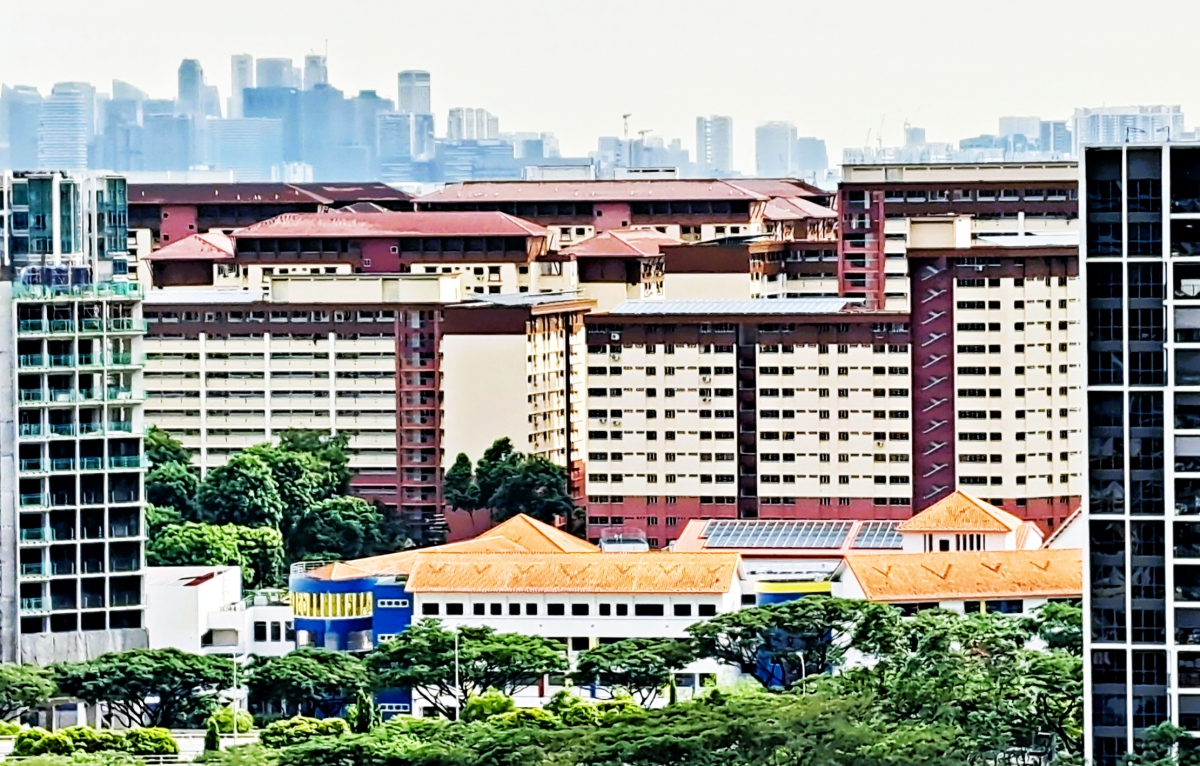
辜加警察的宿舍设计融入尼泊尔山区的元素
在四德女中与巴特礼中学之间,矗立着辽阔的翡珑山营房(Mount Vernon Camp),那是约3000名辜加(Gurkha)警察及其家属的居所。辜加警察团的成员源自尼泊尔喜马拉雅山麓的辜加镇,以坚韧、忠诚、无畏著称。他们是新加坡警队的一员,在反恐与维护社会秩序中发挥重要的力量。
百多年前,英国东印度公司与尼泊尔爆发战争,几场关键战役都被辜加军队顽强阻击。英军深受辜加兵的战斗精神所折服,招募他们为雇佣兵。从那时起,辜加兵便成为英军特种部队的一员,也因此踏足新加坡。
二战后,殖民地政府为应对紧张局势,组建辜加警察部队协助维安工作。辜加警察最先参与镇压“玛丽亚事件”(Maria Hertogh Riots)引发的全岛暴动,此后被派到前线应对马共游击队,打击私会党,处理福利巴士工潮,以及关闭中学联所引发的华中学潮,平息华巫种族冲突,追捕持枪绑匪等。近年来,他们也在世界贸易组织部长级会议、美朝“特金会”及年度香格里拉对话等场合负责安保任务。
关于新马合并时期的华巫种族冲突,建国总理李光耀在《李光耀回忆录》中特别强调辜加警察的价值:“当我回到欧思礼路,看见已有辜加警察派驻站岗。与其让华人警察枪杀马来人或马来警察射杀华人引起激烈反响,辜加相对中立,再者他们也以守纪律和忠诚见称。”
新马合并期间,马印对抗加剧华巫两族间的敏感性。本地警察若采取行动,极可能被视为偏袒己方族群,从而激化族群矛盾,甚至引发对警察的个人攻击。辜加警察因无族群利益牵连,可以更冷静、公正地执行任务,成为当时动荡社会中一股稳定力量。
接待苏丹王子的阳伯医院
如今的英雅苑(Park Colonial)所在地,曾是阳伯医院(Youngberg Memorial Hospital)的院址,阳伯台(Youngberg Terrace)就是通往已消失医院的旧路。
-1200x651.jpg)
阳伯医院原址旧貌,如今矗立着英雅苑公寓(图源:新加坡国家档案局)
阳伯医院之名是为了纪念美国基督复临安息日会传教士阳伯(G. B. Youngberg)在新加坡与北婆罗洲20多年的服务精神。二战期间,北婆罗洲沦陷于日军手中,阳伯选择留下来为原住民提供精神慰藉。他并没有得偿所愿,而是被软禁于古晋的集中营,负责照料病重战俘。在写给远在夏威夷的妻子的最后一封信中提到“天公不作美”(weather is bad,gardens poor),数月后因败血症离世。
安息日会早在20世纪初便于新加坡展开医疗传教工作,日据时期曾在新加坡河畔的货仓设立慈善诊所。二战结束后,安息日会正式创建阳伯医院,成为全球300多所由安息日会创办的医疗机构之一。
20世纪50至60年代是阳伯医院最辉煌时期,那个年代的本地社会普遍存在着外国月亮比较圆的观念,阳伯医院以其“美国医院”的名堂吸引本地与邻国社会名流前来就医。这些外国医生一面行医一面传道,足迹遍布多个乡村和外岛,主办产前指导、育婴课程与家庭计划讲座等。随着设备先进的私人医院陆续成立,阳伯医院的外国医生相继离开,由本地医护人员坚守最后一程,于上世纪末走入历史。
比达达利从坟场蜕变成现代花园中的新镇,谱写着新加坡城市发展的独特篇章。这片“仙女”守护的土地将人生的终点化作起点,为都市写下永恒的生命力。
参考文献:
[1]TEric Teo Choon Chew, Youngberg Memorial Adventist Hospital, https://encyclopedia.adventist.org/article?id=CD3P accessed 22 January 2025.
[2]Judson Chhakchhuak, Youngberg, Gustavus Benson, Sr. (1888-1944), SDA Encyclopedia of Seventh-Day Adventists, https://encyclopedia.adventist.org/article?id=AD3N&highlight=y accessed 31 January 2025.
[3]Kamaludeen Mohamed Nasir, Bryan S. Turner, The future of Singapore: population, society and the nature of the state, Routledge, Taylor & Francis Group, New York, 2014. ISBN 978-0-415-71594-2.
[4]Lee Kuan Yew, From Third World to First: the Singapore Story, 1965-2000: Memoirs of Lee Kuan Yew, Times Media Private Limited 2000, ISBN 9789812049841.
[5]M. Renuka, Gurkhas, Singapore Infopedia, https://www.nlb.gov.sg/main/article-detail?cmsuuid=981140fa-f5f7-428a-8787-93be0cd55d94 accessed 22 January 2025.
[6]The First WTO Ministerial Conference, WORLD TRADE ORGANIZATION, https://www.wto.org/english/thewto_e/minist_e/min96_e/min96_e.htm accessed 27 January 2025.
[7]陈天明,《从百余人发展到千人 辜加警团执法五十年》,《联合早报》1999年5月9日。
[8]李凤婷,《此情可待成追忆——阳伯医院一段悠悠岁月》,《联合早报》1995年3月19日。
(作者为英国皇家造船师学会会员、自由文史工作者)
Bidadari: A “Fairy’ s” Reawakening from a Former Religious Cemetery
Bidadari, located in Upper Serangoon, has undergone a significant transformation from a religious cemetery into a contemporary “community in a garden”. Occupying an area of about one-fifth the size of Toa Payoh, it includes more than 10,000 public and private housing units. The estate is expected to be entirely completed by the end of 2025.
Historically, Bidadari was associated with religious burial grounds. After burials ceased in the 1970s, it returned to nature and turned into a peaceful sanctuary for residents and birdwatchers. The area was divided into four key zones: Alkaff (previous Christian cemetery), Woodleigh (previous Muslim cemetery), Bartley Heights (previous Hindu cemetery), and Park Edge (previous Sikh cemetery).
Beneath the estate, there is an underground reservoir, the first of its kind in Singapore. It provides clean water to about 80% of its households, showcasing an impressive integration of urban growth and infrastructure.
At the heart of the new town lies Bidadari Park, inspired by A.A. Milne’s “Winnie the Pooh”. The park maintains its natural charm and a distinct historical scenery. A prominent feature is the new Alkaff Lake, named after a long-vanished
Japanese-style park that was once located nearby. Besides providing scenic views, the lake plays an essential role in flood management, channelling rainwater to the Kallang River during heavy storms.
The park also features the Raptor Nest Platform, a sanctuary for migratory birds. It embraces the harmony between wildlife and city living.
Looking back at the 1860s, Temenggong Abu Bakar of Johor (who later became Sultan) acquired the land and built the Istana Bidadari for his second wife, Zubaidah binti Abdullah, a Danish-Chinese woman who converted to Islam. The word “Bidadari,” which translates to “fairy” in Malay, became a poetic title for the graceful consort. Ultimately, the palace became neglected after the royal family relocated to Johor in 1885.
The colonial government transformed the site into a multi-religious burial ground. In the early 2000s, a project for exhumation took place to make way for redevelopment. Tombstones, including those belonging to notable historical figures such as the former labour minister Ahmad Ibrahim, architect R.A.J. Bidwell (designer of Raffles Hotel) and early Chinese physician Dr Lim Boon Keng, were relocated to a Bidadari Memorial Garden at Mount Vernon.
Mount Vernon formerly housed Singapore’s first public crematorium. It was established during the era of self-governance and updated in the 1970s. A few years ago, the columbarium was removed to allow a multi-storey funeral complex that is currently under construction.
Bidadari has long been a flourishing centre for education adjacent to the cemeteries. At present, there are six schools left, including Cedar Girls’ Secondary School and Maris Stella High School. Even though several schools, like Mount Vernon Secondary School and Sang Nila Utama Secondary School have shut down, their legacy persists in the form of local road names.
Mount Vernon Camp is nestled between Cedar Girls’ Secondary School and Bartley Secondary School. It is home to 3,000 Gurkha police and their families. Gurkhas originate from Nepal and have been serving in Singapore since the colonial era. They are known for their resilience, loyalty and fearlessness. From suppressing riots in the 1950s and 1960s to ensuring protection at global events like the Trump-Kim meeting and the Shangri-La Dialogue, they continue to play an essential role in upholding public safety. The founding Prime Minister Lee Kuan Yew emphasised their neutral position during racial conflicts, noting their crucial role in preventing ethnic polarisation among local police forces during the merger with Malaysia.
The current location of Park Colonial was previously the site of Youngberg Memorial Hospital, a mission hospital established by the Seventh-day Adventist Church. Named after missionary G.B. Youngberg, it served the community from the post-World War II era until the late 20th century. Its combination of medical care and spiritual support impacted both urban and rural communities, especially when dedicated Western private hospital care was in demand.
Bidadari’s transformation from sacred burial grounds to a vibrant contemporary housing estate tells a unique story of urban growth in Singapore. Protected by the essence of a “fairy”, Bidadari now embodies a harmonious fusion of memory, culture and nature, infusing the metropolis with everlasting vitality.


.jpg)
.jpg)
